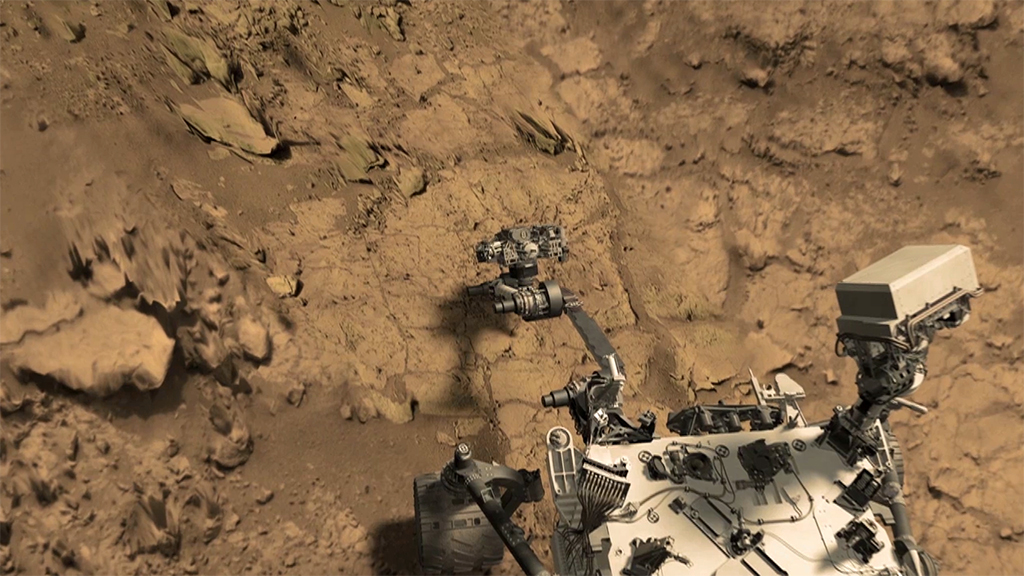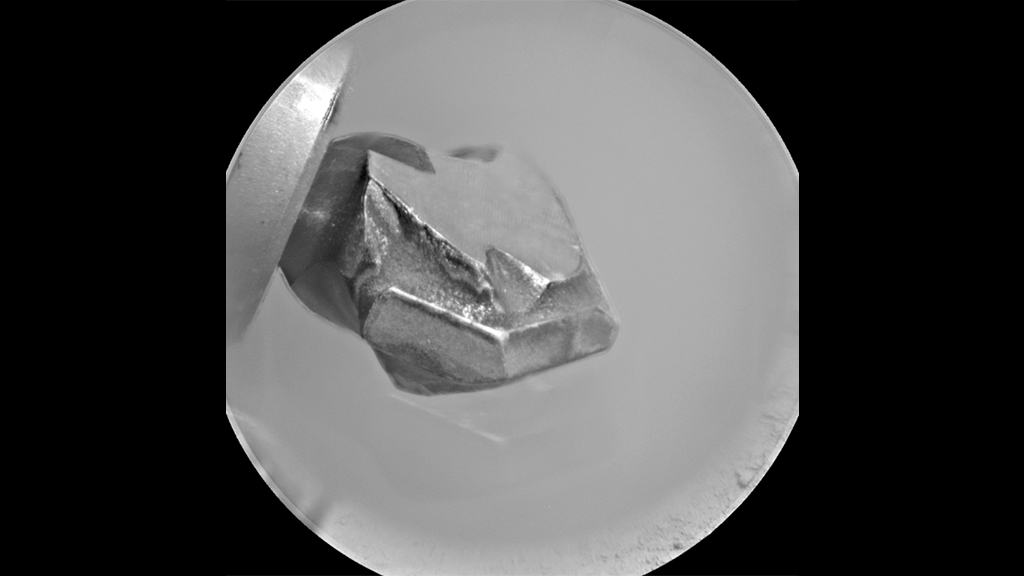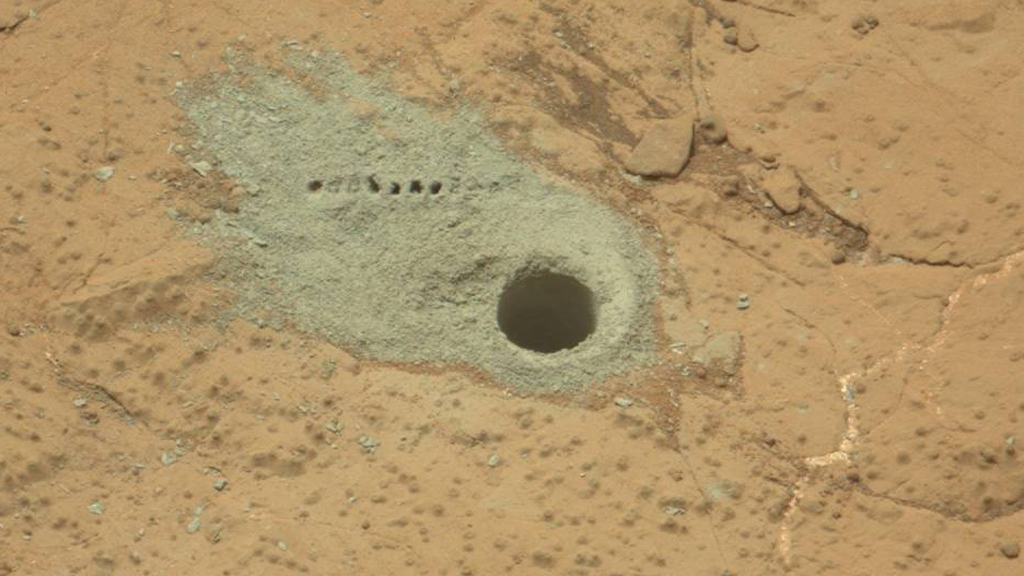Planets and Moons
ID: 11276

NASA's Curiosity rover is the first robot to collect a sample drilled from the surface of Mars. On February 8, 2013, the tool at the end of Curiosity's robotic arm successfully drove a drill bit about two and a half inches into a flat patch of rock. Analysis of the powdery sample collected from the rock, now named John Klein, showed environmental conditions that could have been favorable for microbial life. This rock lies in Glenelg, a region where scientists found evidence of past water. The rover drilled into a second rock nearby, called Cumberland, on May 19 to confirm the results of the initial tests. This time, Curiosity made use of its new capability to stow some of the sample, in case more tests need to be conducted later. Watch the video and animation to see how Curiosity drills.



Drilling On Mars




For More Information
Story Credits
Please give credit for this item to:
NASA's Goddard Space Flight Center
Video and animation courtesy of NASA/JPL
Drill bit image courtesy of NASA/JPL/Caltech/LANL/CNES/IRAP/LPGNantes/CNRS
Ground images courtesy of NASA/JPL-Caltech/MSSS
NASA's Goddard Space Flight Center
Video and animation courtesy of NASA/JPL
Drill bit image courtesy of NASA/JPL/Caltech/LANL/CNES/IRAP/LPGNantes/CNRS
Ground images courtesy of NASA/JPL-Caltech/MSSS
Short URL to share this page:
https://svs.gsfc.nasa.gov/11276
Keywords:
SVS >> App
NASA Science >> Planets and Moons
https://svs.gsfc.nasa.gov/11276
Keywords:
SVS >> App
NASA Science >> Planets and Moons







